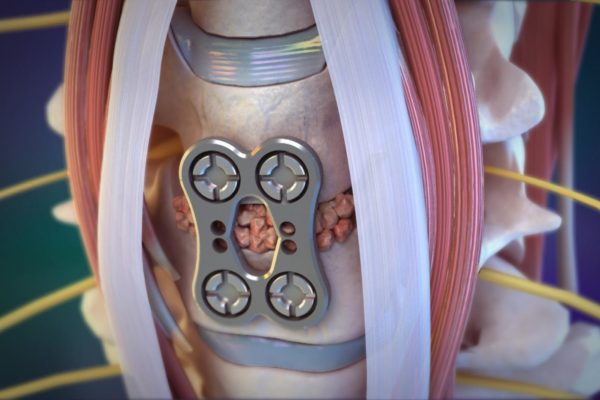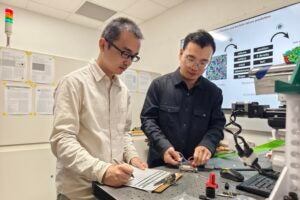AUSTIN, Texas — The most comprehensive collection of biomedical and scientific visual aids ever produced has a new home: The University of Texas at Austin. Thanks to the generosity of its creator — medical animation pioneer Bruce Blausen — the Blausen Medical Library’s vast archive of medical images has been made freely available through UT’s Cockrell School of Engineering to assist in the research, teaching and discovery of every student and faculty member on campus.
With more than 28,000 3D animations and illustrations detailing everything from electromagnetic arrays to sarcomeric Z-lines, the Blausen Medical Library is the largest visual collection of its kind, and unrestricted access to all files in perpetuity will soon be a luxury enjoyed exclusively by the UT Austin community.
From helping medical students better understand the complexities of human anatomy to assisting mechanical engineering students in the development of rehabilitative technologies, the library’s impact will be felt across the UT campus. Faculty members in the Cockrell School’s Department of Biomedical Engineering have already identified several courses in which students will benefit from the library’s detailed visual presentations on challenging topics such as physiology and drug delivery systems.
“In my initial conversations with faculty and staff at UT Austin, I could immediately sense their excitement as they envisioned potential applications in labs and classrooms,” Blausen said. “I knew then that if I made the full library permanently available to UT, its impact could be immense. It could serve an important purpose for students’ technical development.”
There is also potential in the coming years for advances in technology to enhance the Blausen Medical Library experience for students, faculty members and researchers. Virtual reality offers opportunities for unprecedented immersion by placing users inside a “digital classroom” where they can watch animations on a large virtual screen or interact with 3D models, and Blausen’s team is already exploring opportunities to make this new learning environment possible.
“Bruce Blausen’s gift is extraordinary in many ways,” said Sharon L. Wood, dean of the Cockrell School. “The library, which contains beautifully detailed images and videos, is unlike anything else in the world. Providing our community with unlimited access to these resources will enable new and innovative methods of teaching and learning in our classrooms.”
Blausen earned a master’s degree in medical illustration from Johns Hopkins University in 1987, where he was the program’s first student to produce a thesis using computer animation. His unique expertise with this still-emerging technology led him to work with James “Red” Duke, a trauma surgeon at The University of Texas Health Science Center at Houston whose nationally syndicated “Texas Health Reports” introduced Blausen’s early animations on the national stage in the 1980s.
In 1991, Blausen founded Blausen Medical Communications Inc. and currently serves as CEO. He has continued to refine, enhance and add to the library ever since. The company now includes a 12-person team of producers and animators helping to develop the 3D animations.
“It takes four weeks and $20,000 to complete just one minute of animation,” Blausen said. “Thankfully, the human body doesn’t change, so a majority of our content has a long lifespan. But animations of novel processes like drug delivery will need to continue evolving along with the emerging technologies they depict.”
The library is valued at $25 million and covers more than 1,800 topics including health conditions, diseases and treatments, as well as the human anatomy ranging from muscles and organs down to human mechanics at a cellular and molecular level.




